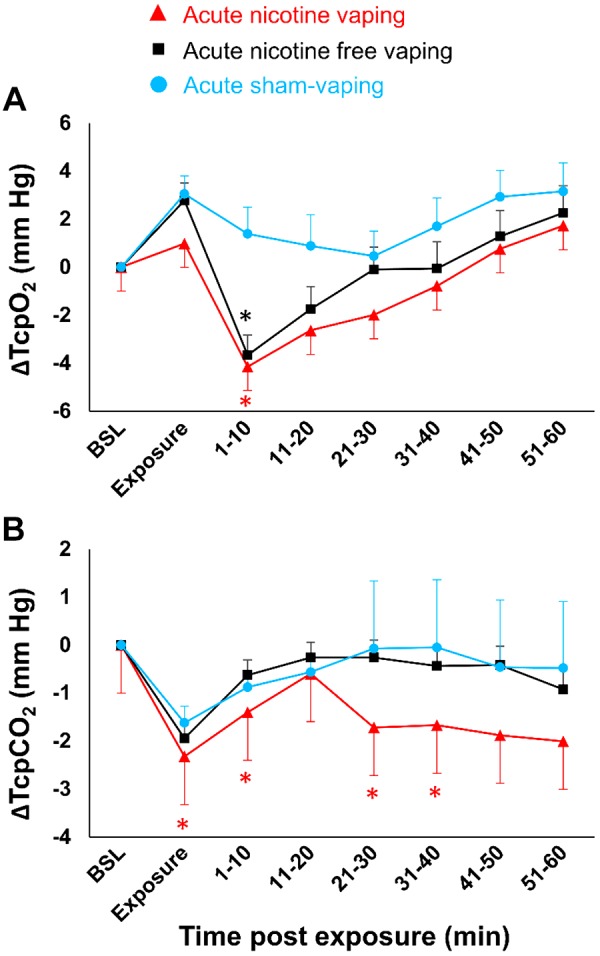Fig. 4.

Absolute changes over time in transcutaneous partial pressures of oxygen (TcpO2) (A) and carbon dioxide (TcpCO2) (B) after acute nicotine-vaping (nicotine-session) (red triangles), acute nicotine-free-vaping (nicotine-free-session) (black squares), and acute sham-vaping (stop-session) (blue dots). Compared with acute sham-vaping, acute nicotine- and nicotine-free-vaping were associated with slight decreases in TcpO2 for 10 min postexposure. Compared with acute sham-vaping, acute nicotine-vaping was associated with significant decreases in TcpCO2 that persisted for 40 min postexposure. The red asterisks represent significant P values from the comparison of acute nicotine-vaping vs. acute sham-vaping, and the black asterisks represent significant P values from the comparison of acute nicotine-free-vaping vs. acute sham-vaping. A mixed-effects linear model analysis was performed with experimental sessions and time points as fixed effects and baseline (BSL) values as random effects (random intercept model). *P < 0.05. Data are the mean ± SE.
